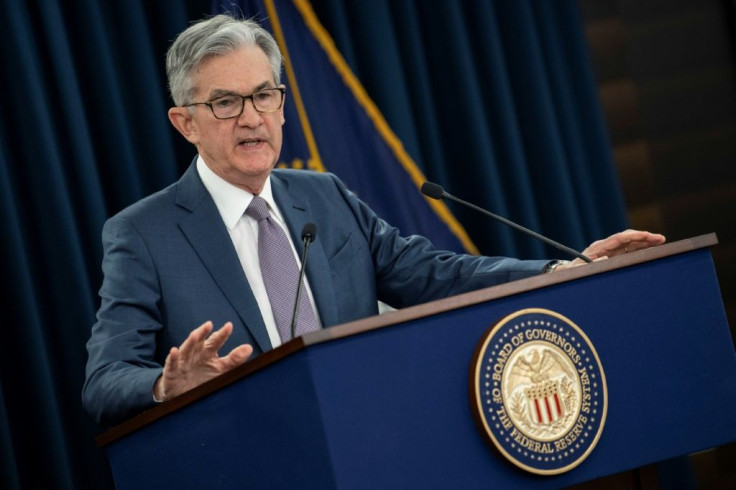Fed More Upbeat On US Economy But Will Keep Stimulus In Place
US central bankers are much more optimistic about the outlook for the American economy, as trillions of dollars in stimulus are flowing, but Federal Reserve Chair Jerome Powell cautioned Wednesday that a full recovery remains far off.
While the recovery from the pandemic has been faster than expected due to rapid action by Congress, "the economy is a long way from our employment and inflation goals, and it is likely to take some time for substantial further progress to be achieved," he said at a press conference following the two-day policy meeting.
He warned against becoming complacent about the good news seen to date in the world's largest economy, and promised that the Fed "will continue to provide the economy the support it needs for as long as it takes."
That may assuage the concerns of financial markets that have been on a rollercoaster in recent weeks, torn between celebration of the faster recovery and concern about an inflationary spiral that could lead to higher borrowing costs.
With funds starting to flow into the economy, the members of the policy-setting Federal Open Market Committee (FOMC) upgraded their forecasts, pushing the median GDP growth estimate for 2021 more than two points higher to 6.5 percent.

Faster growth will be accompanied by a rise in inflation to 2.4 percent, but the projections showed most officials do not expect to raise their benchmark interest rate through at least 2023.
While a couple more of the central bankers now see an increase in 2023 or even 2022, that was not enough to move the median.
The upgraded forecasts, the first released since December, reflect the expected boost from the $1.9 trillion relief package President Joe Biden signed last week, and the after-effects of a $900 billion aid measure Congress approved in the final days of 2020.
That flood of cash is expected to shore up businesses, boost hiring and unleash spending. The Treasury Department on Wednesday said it already had sent out 90 million of the latest stimulus payments of up to $1,400 going to nearly every adult and child in the country.
FOMC members see unemployment improving somewhat, falling to 4.5 percent by the end of the year from 6.2 percent currently, but they do not expect joblessness to return to pre-pandemic levels until 2023.

Powell said the economy appears to have avoided the worst of the scars from the crisis, but the FOMC said in its policy statement the pandemic still "poses considerable risks to the economic outlook."
Financial markets have been concerned that the economy's stimulus-fueled rebound will spark an inflationary spiral that would oblige the central bank to pull back on easy-money policies it rolled out as the Covid-19 pandemic began last year.
But Fed officials have downplayed that concern, and their forecasts show economic growth is expected to taper off to 3.3 percent next year, with an accompanying dip in inflation to 2.0 percent.
And Powell stressed once again that the central bank has no intention of raising the policy interest rate until three conditions are met: full employment, inflation of 2.0 percent, and "that's on track run moderately above 2 percent for some time."
Unlike in previous recoveries, where the Fed raised rates before inflation actually increase, to get ahead of the curve, Powell said "liftoff" will have to wait until "we see the data."
Inflation in recent years has rarely pushed above the 2.0 percent target.
"The Fed's ongoing sanguine outlook for inflation rests heavily on the experience of the last decade, during which inflation remained subdued despite fiscal deficits and accommodative monetary policy," Mickey Levy of Berenberg Capital Markets said.
He again acknowledged that prices could spike this year compared to the low levels seen during the 2020 shutdowns, and due to supply bottlenecks, but would not provide details on how high inflation would have to rise to concern central bankers.
However, the central bank is "prepared to adjust the stance of monetary policy as appropriate if risks emerge that could impede the attainment of the Committee's goals," the FOMC statement said.
Investors have focused on the recent rise in yields on the 10-year Treasury note as a red flag for rising inflation, but though Powell said the Fed is watching he did not seem overly concerned.
"I would be concerned by disorderly conditions in markets or by a persistent tightening of financial conditions," he said.
© Copyright AFP 2024. All rights reserved.





















